4 Steps to Building Healthy Soil
Podcast: Play in new window | Download
Subscribe: iTunes | Android | RSS
Welcome back to another episode of the Homegrown Liberty Podcast, this is episode 46, and we’re talking about Building Healthy Soil. This is one of those topics that always comes up and I’ve not done a great episode specifically on this topic, and gotten deep into it. I’ve done a couple episodes where I talked about building raised beds a bit, and how I do that, but never got real deep into the why for a lot of the particulars. So I figured now would be a good time to do a soils episode where I teach you a bunch about the principles and practices of good soil management.
What is Dirt?
First I’ll talk about the big 4 components like most universities will cover. We’ll talk about them in the same way as typical geologists and ag teachers will, but then I want to talk about the real backbone of healthy soil, the most important thing.
Minerals –
These are the main component that make up most soils according to soil scientists. It’s sand, clay, silt, calcium, magnesium, you get the picture. This is mostly just kind of filler materials like sand and small rocks. But the minerals are absolutely vital to healthy balanced soil. Lots of people think it’s a great idea to wholesale add large amounts of minerals to their soil, but that’s often unnecessary, or even can be harmful to healthy balanced soil. There are few instances where it makes sense to add minerals, so if in doubt, leave it out.
Air –
This is one component that’s often forgotten or overlooked. Good soil will have a lot of air inside it. It’ll be fluffy and airy. The particles will clump together and leave gaps and spaces between them. And believe it or not, air is probably by volume the second highest component found in good healthy soil. That’s kind of weird to think about huh?
Water –
Another critical component often overlooked or misunderstood is water. Vascular plants die quickly without an adequate supply of water. If you could zoom into short of the molecular level, you would see what look like globs of water sticking all sorts of bits together. So healthy soils will always have a good amount of water by volume.
Organic Matter –
Here’s a biggie, organic matter. This is the rotting stuff from plants and animals that remains in the soil. This is a very important part of soil and not to be dismissed lightly. You can grow wonderfully healthy plants in 100% organic matter in the form of compost and they will flourish. So whenever possible, you should try to add organic matter to your soils and build up that content to the best of your abilities.
What Makes it Soil?
Healthy soils are teeming with life. Lots of people think we add fertilizers to feed plants. That’s not the best way to go about it. Yes it works for a while, but if you are feeding the plants instead of the soil, you are feeding components that aren’t biologically friendly to the most important components in the soil. Remember I said I’d tell you what the most important part of the soil was after we covered the big 4? Well here they are, these are the really important 3 components in good healthy soil.
Bacteria –
This is probably the most important and most often overlooked component of soil. Most people think of soil as just this brown or grey stuff that holds the plant up and gives it somewhere to put roots. That couldn’t be farther from the truth. There are billions and billions of bacteria in healthy soil, so much that you’d never be able to count even a tiny fraction of them in a teaspoon of soil. They recycle dead roots and other components and multiply, then when they die, they leave behind a nutrient soup that’s just right for the plants to absorb with their roots.
Fungi –
Beneficial fungal organisms, pathogenic, as well as benign all make up this category. One of the hot topic buzzwords you’ll hear a lot in sustainable and regenerative circles is mycorrhizal fungi, or arbuscular mycorrhizal fungi, also known as AMF. These things are symbiotic with plants, which means they bond to the plants and trade components back and forth for mutual benefit. They aren’t harmful and actually will do a lot to make a plant healthy and strong. There are some plants that give over all phosphorus uptake responsibilities to AM fungi. The fungi trade phosphorus for carbon and both the plant and fungus help each other out. The point is that fungi are critical to healthy soils and everything we can do to promote good growing conditions for them makes for much better and healthier soil. Which makes our plants healthier and better able to withstand harsh conditions.
Macrobiologicals –
These are things like earthworms, nematodes, ants, spiders, all sorts of beetles and other various arthropods and protozoa. It’s a whole world full of incredible creatures that live, breed, eat and die in the soil. And it’s what makes the soil healthy and alive! They are the cleanup crews and the tillage critters. They take materials from the top layer and mix it into the lower layers, constantly turning the soil and leaving channels for air to penetrate and bring fresh life to the whole soil column.
Basic Principles
Keep Covered –
This means mulch! I tell people you have to put a lot of mulch down to do the job well but they almost always skimp and then tell me that my method didn’t work. Minimum amount of mulch is 4” I tell people, but 8” is much better. The nice thing about mulch is that for the most part, if you mulch well and use material that breaks down quickly, you almost don’t need to amend the soil anymore with fertilizer type ingredients like manures. The mulch takes care of most of those needs. If I had to pick one mulch that is the best, it’s probably wood chips from branches and twigs, second would be tree leaves, and third would be wood chips or shavings from the harder wood of a tree. The kind of wood chips that don’t have much bark if any at all.
Keep Moist –
Moist soils harbor life, dry soils let everything die out. So maintaining a consistent moisture level is critical. But ya want a really easy way to make sure you keep that soil moist? Mulch it. We just went through 5 months with no appreciable rainfall and a pile of mulch is moist about 6” under the surface. No rain in 5 months and it’s moist under there and full of life. Almost no need for irrigation if you mulch well.
Here are some pictures of mulch we use, the first one is the planer shavings from a cabinet maker, second one is the mulch pile that is dry on top, and the third is a closeup of how moist it is underneath.
Feed The Microbes –
Again, mulching does this for you! But if you want to get more advanced and boost the soil life even more, adding manures and compostables like vegetable peels and ground up seeds of any kind will really kick things into high gear. Sugars are also great for boosting bacterial life, I use a cup of molasses dissolved in a gallon of warm water and soak that into the garden soil when I want a boost in life and then a subsequent die-off of bacteria and yeasts a month or so later when the sugars are all used up. It’s like a timed release fertility boost. I really like components like alfalfa pellets, chicken laying pellets, or generic all stock pellet feed. It’s mostly ground up corn, wheat, barley, and soybeans, but it is stellar earthworm food and does marvelous things to feed microbes and all the other critters in the soil. As for manure, my favorites are rabbit, goat/sheep, and cow manures. Everything else takes a lot more work to make it reliably useful in the garden. Be careful with horse manure, they are often loaded up with dewormers which kill your soil critters, and horses don’t digest the weed seeds, so if you use raw horse manure, you’re likely seeding your garden with weeds. Compost that stuff first!
Here’s a picture of what the soil looks like after all the amendments are added. You can see alfalfa pellets and some chicken laying pellets dissolving, as well as some rabbit manure all mixed into some old rotting mulch and leaves. It turns into beautiful soil in a year.
Seed With Life –
Here’s a great way to get things really growing quickly for you. Head out to a local forest and harvest some forest floor soil and leaf mold to spread under your mulch in the garden. It’ll be full of all sorts of helpful organisms and will seed your garden soil with lots of life if you’re going from somewhat dead or lifeless soil. It’ll shave off years of building life by putting just what you need to grow right in place. Just make sure you don’t leave huge patches of bare dirt in the forest, please harvest small patches and cover the dirt back up with the leaves you scraped away.
Another thing to remember is that when you make compost, you are building mounds of material and setting up the perfect conditions for soil bacteria to proliferate. They go bonkers and reproduce on a massive scale which is great for soil health, so another thing you can do to seed your soils with life is to amend with compost. It’s a perfect soil conditioning amendment.
Raised Beds vs. Sunken Beds vs. Everything Else
First I’ll want to define the terms so we are all on the same page and you don’t misunderstand what I’m advocating here.
Bare Soil Traditional Gardening –
This is what most people think of when they imagine gardening. Basically row crop farming on a backyard scale. Imagine the typical tilled rows behind a tractor and the off contour flow of water and nutrients when it rains. Most people do this kind of gardening for some odd reason. I don’t understand why they think they have to copy industrial ag to garden, but they do. This as as you can imagine, is not a method I endorse. It’s destructive of soil organisms and the soil structure. It kills most everything living in the soil matrix and compacts the soil quickly. There’s a huge difference between gardening and industrial farming, so let’s not get them mixed up. We can be much more intensive and intentional when we work on a smaller scale. This type of gardening leaves the soil uncovered where it is exposed to UV rays which kill beneficial organisms. It’s exposed to wind and it oxidizes organic matter quickly which reduces the fertility and health of the soil. And since it’s exposed to the sun, it triggers the germination parameters of seeds that exist in the soil or that blow in or fall from bird droppings. Do you want to fight weeds? Cause that’s how you get weeds. I’d rather pick veggies than weeds. Exposing the soil makes weeds sprout and grow. If you don’t want that to happen, then don’t expose your soil!
Sunken Beds –
Here’s an unusual technique to put in place if you are in a very dry climate. You dig out the growing space, raise your walking path and sink in the beds below the surface of your path. This concentrates the water you get from rain into the growing zone. And it helps to keep any irrigation focused specifically on where the plants need it most. I don’t think I have to say this, but this technique is something that you shouldn’t employ unless you’re in a desert environment.
Eden Gardening –
This is a popular technique recently that I kind of like, but it does eliminate some of the really cool benefits and is just in my mind a little bit boring. But the basic idea here is that you lay down a weed barrier like cardboard, then mulch heavily with wood chips and just let it rot, and you add wood chips every year to the whole area and as it rots, you build soil. Simple, easy, but you need a ton of wood chips… literally tons.. So sometimes this is not practical, and it ends up being a big area of just mulch and to me doesn’t look good. So maybe I’m just biased but I’m not a huge fan, but it ticks most of the boxes for good design in my opinion, but I think there is a better way to do things.
Raised Beds –
This is what I do, and my favorite method of gardening and building soil. It’s practical, it looks great, has structure, and I mean just mounded up soil and mulch here. I’m not a big fan of raised beds with sides except for special circumstances. The only time where it really makes sense is if there is very limited space, resources are cheaply acquired to build sides, or if accessibility is a primary concern such as a back injury, or handicapped accessibility. So if one of those applies, then go ahead and build wooden, metal, concrete, or whatever kind of material, but it’s expensive and takes a lot of time! That’s why I just dig out the footpath and dump the dirt to the downhill side and I follow the contour of that grade. That turns my footpath into a soakage system. When it rains, the path fills up with water and soaks into the raised bed from the uphill side and flows through the root zone towards the lowest part of the property. This allows me to irrigate if I need to by just filling the top path with water and letting it overflow to the next one, and so on until they are all full. I don’t need sprinkler heads, or drip irrigation, or anything fancy, just a way to get water into the top ditch.
Here is a picture of what the beds look like after being formed. Note the water lines showing where water sits in the walking paths.
This one is after a massive rain that washed my neighbor’s garden away. As you can see, my halfway planted garden is sitting high above the rainwaters, slowly soaking the rain into the berms. We were able to take what was a damaging rain event and turn it into a beneficial one just with smart design.
I end up with these nice looking curvy beds filled with growing things, and nice little walking paths that direct people where they can walk when they get into the garden. It’s really frustrating when you have a bunch of new plants germinating and someone tramples it. Paths are great!
The idea here is to delineate the area to be cultivated, and keep walking paths separate from the growing area. This eliminates using valuable compost on areas where you are going to walk, and ensures you maintain uncompacted soil in growing zones. It reduces wasted amendments, and I dunno about you, but I like to get the most bang for my buck, and the best return for my efforts.
Here’s a picture of what our native soil looks like before my treatment, and a year afterwards. The difference side by side is striking.
So when you’re thinking about how to build healthy soil in your garden, or for your trees, bushes, anything, just remember the principles we talked about here.
- Keep the soil covered
- Keep it moist
- Feed the microbes, not the plants
- Seed the soil with life
If you manage to do those things, no matter how you get there, as long as those principles are followed, you’ll build lots of great soil and have success with your plants.
Alright guys, that wraps things up, if you want to follow up on this or ask questions, comment on the blog post, or join our facebook group! I’m there every day helping answer questions and sharing updates on the homestead occasionally. And if you’re in the East Texas area, I’ll probably be doing a short consulting tour the end of this month, or the beginning of December. So shoot me an email to nick@homegrownliberty.com if you want to have me drop by for a couple hours and do a little bit of consulting. It’s WAY more affordable to have me come to your place when I do tours
Until next week
I hope you have a wonderful day, God Bless. And as always “Go Do Good Things”


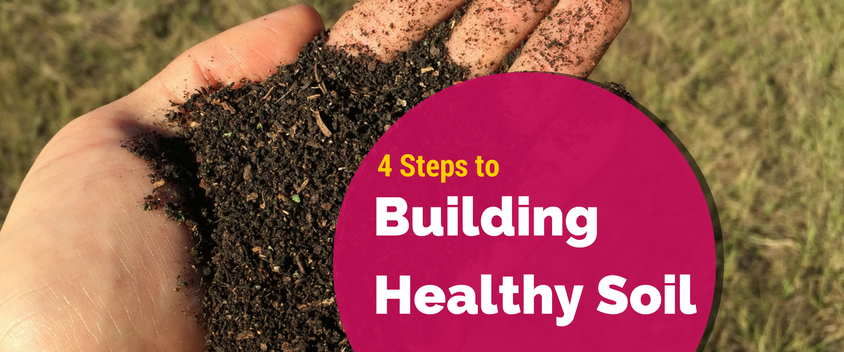
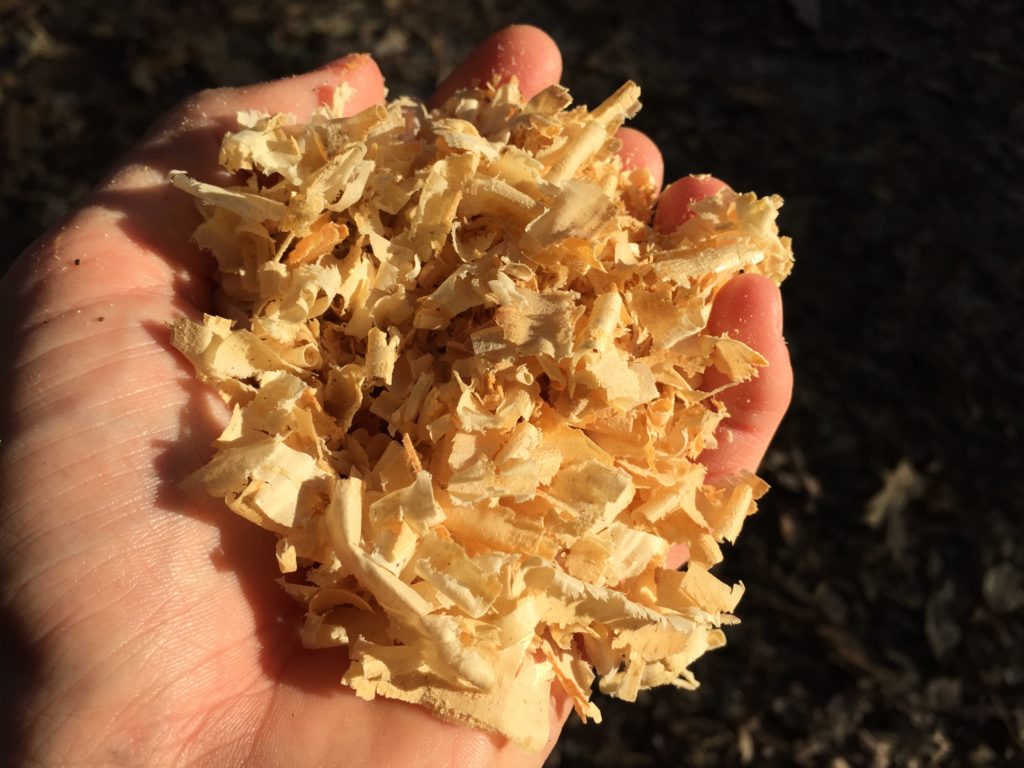
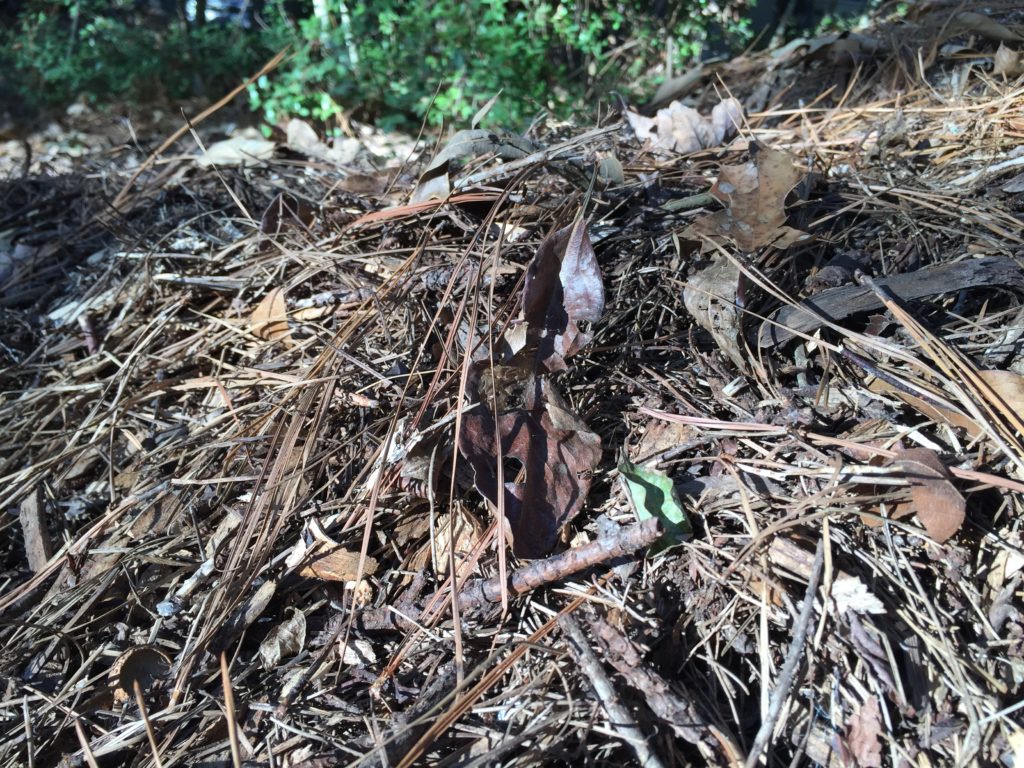
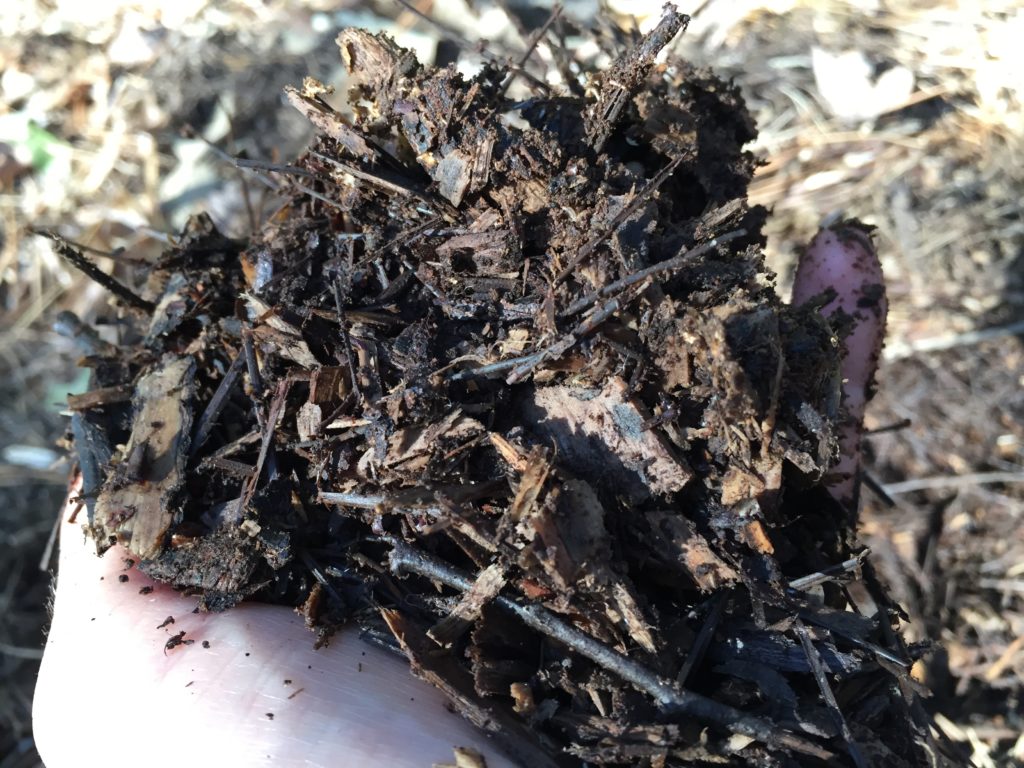
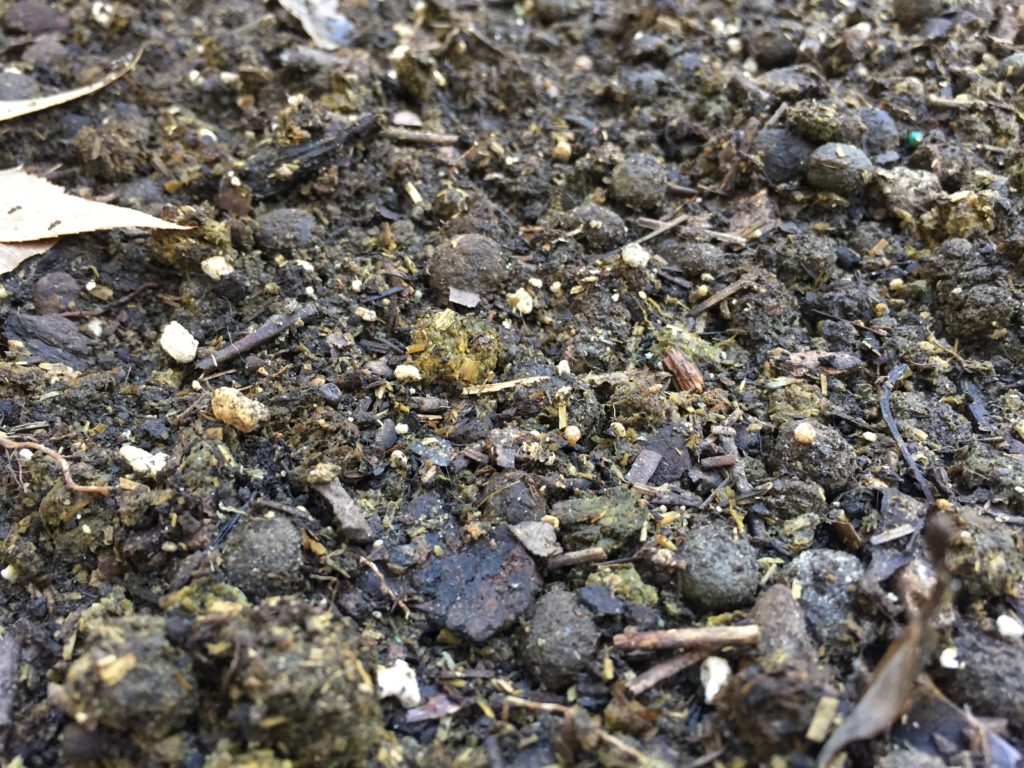
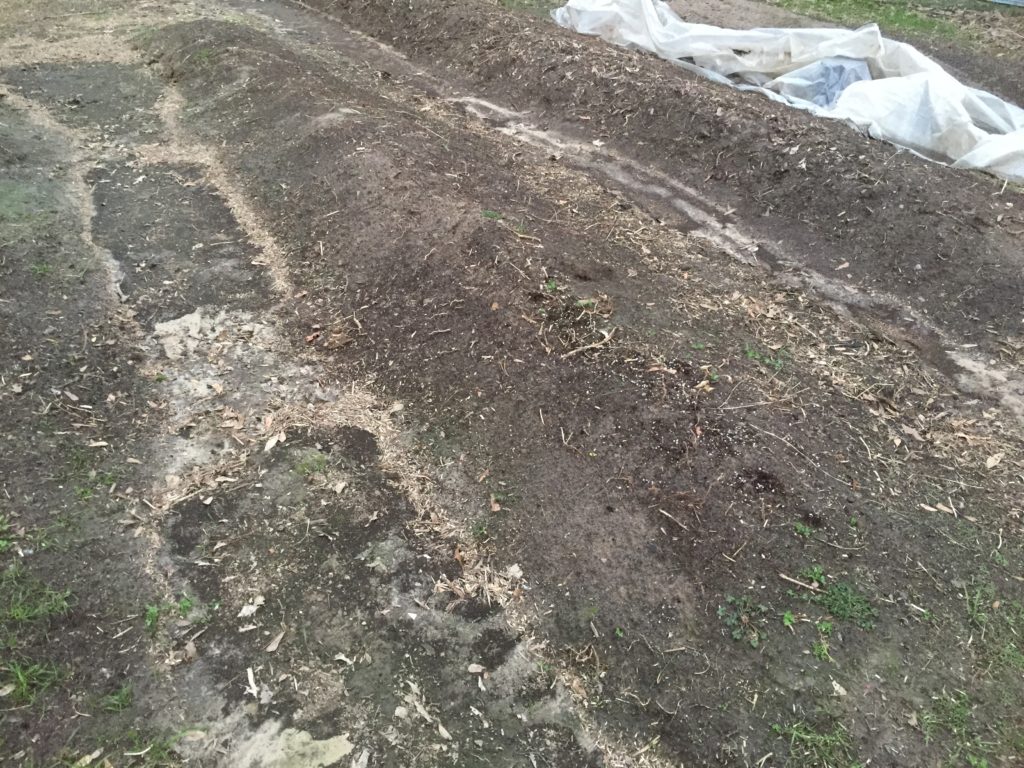
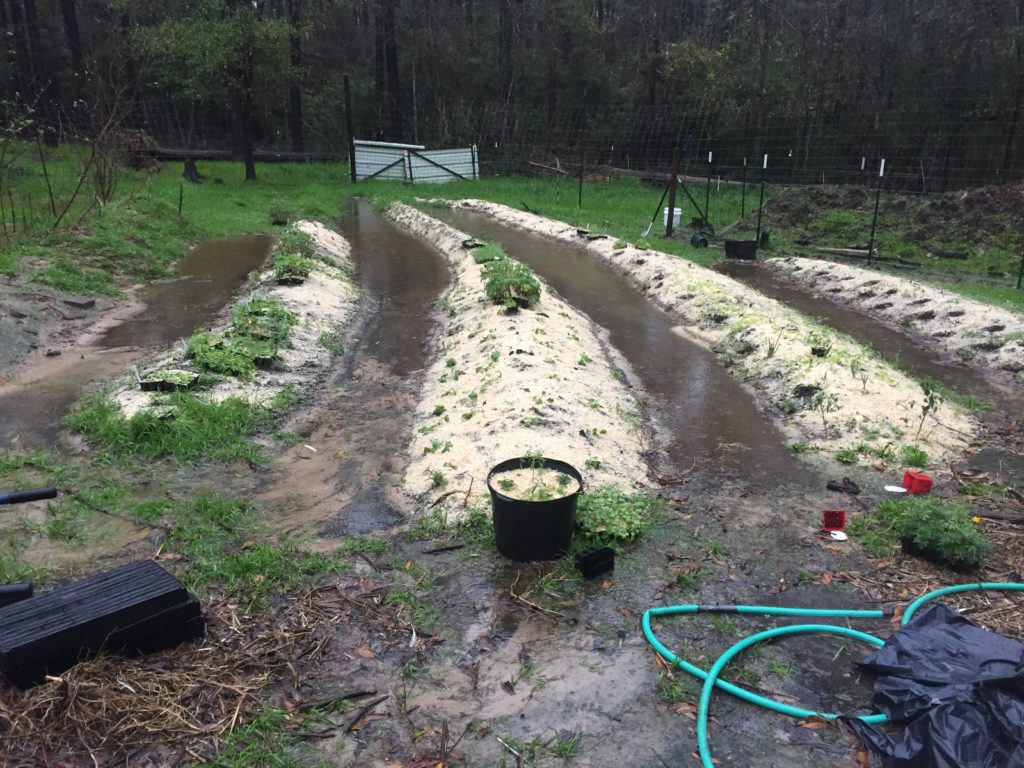
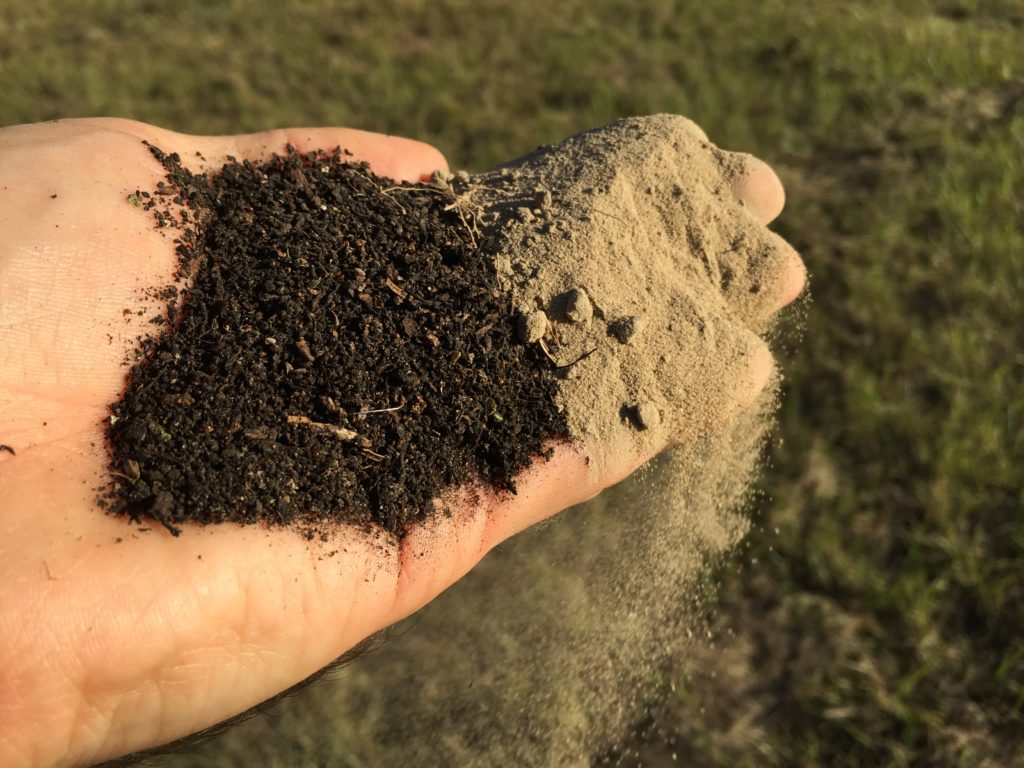
Nick, really appreciate your podcast and the help it’s provided me. I’m at 7500′ in elevation in Colorado, getting roughly 15-20 inches of rainfall a year. Our spring and summer stay pretty wet through August or September and things dry out pretty fast (we’re talking dirt with the consistency of flour). I’m going to follow your advice for keeping the soil covered, lots of good prairie grass grows native here and we use it to pasture rotate our goats. I plan on using raised beds similar to yours going forward on my new property (I’ve always done the raised 2×8 bordered beds in the past).
Questions:
1) Do you run a drip line along the top of the raised mound?
2) I get a lot of wind from the West and the North and I’m trying to determine the best windbreak because even if I cover the soil, some of the mulch will be blown away; probably a 4′ wooden fence on the West because my natural windbreaks will take a long time to grow; do you agree?
3) You had mentioned an easy way better than an A frame to determine the contour of the land; where might I find that information?
Thanks for your help.
You probably should use drip line. I’d suggest using the type of drip irrigation that is intended to be buried beneath turf for sub-surface irrigation of a lawn. It looks like a poly tube with emitters built right onto the sidewall of the tube at specified intervals. I’d suggest 12″ interval.
If you have wind problems, then you will definitely want to get some wind block installed, as well as planting something that will grow well for you and provide wind blocking cover for the garden. You might want to check into Caragana arborescens also known as Siberian Pea Shrub. It handles drought well, cold, elevation and all that. May be a good fit for you.
Just search on youtube for water level. I’ll have a video of how to use it published soon hopefully. Trying to get all the work done here this late winter and take care of clients, so that might be pushed to the back burner. But in the meantime you should be able to find a few videos online for how to build and use one. They’re commonly used to level buildings.
Hey Nick,
We need to improve our soil over all. This is a method we can apply to garden beds and swales but what about grazing soil? How do we improve where our grazing animals eat? We struggled to even get grass seed to take this year. We have two different areas for improve: 1) already grassy areas with compacted soil and 2) the wooded areas that are heavily mulched, likely healthier soil, but don’t grow grass for the grazing animals. Any advice would be greatly appreciated. Thank you
The best things for pasture improvement is consistent, frequent grazing animal movement. You want to put herbivores onto the land stocked densely enough to consume about 60% of the available forage, and then make sure you don’t allow the animals back to that plot until it has recovered at least 100% of the growth that they consumed. If you keep it up, you will see improvement. You can also improve pasture areas by winter sowing of small grains like rye, wheat, oats, as well as sod busting plants like daikon radish. The radishes can get as big as 3 feet long and 3 inches around. Then when they die, a big root is left in the ground to rot creating a highway of worm food, encouraging earthworms to dig deep.
This is a great topic Nick, very helpful for any gardener. Healthy soil is the foundation for any productive plant.
Great episode Nick! Is it good practice to use straw or wood chips on the walking paths?
I use wood chips, as they break down, I either add them to a compost pile or rake up into the beds.